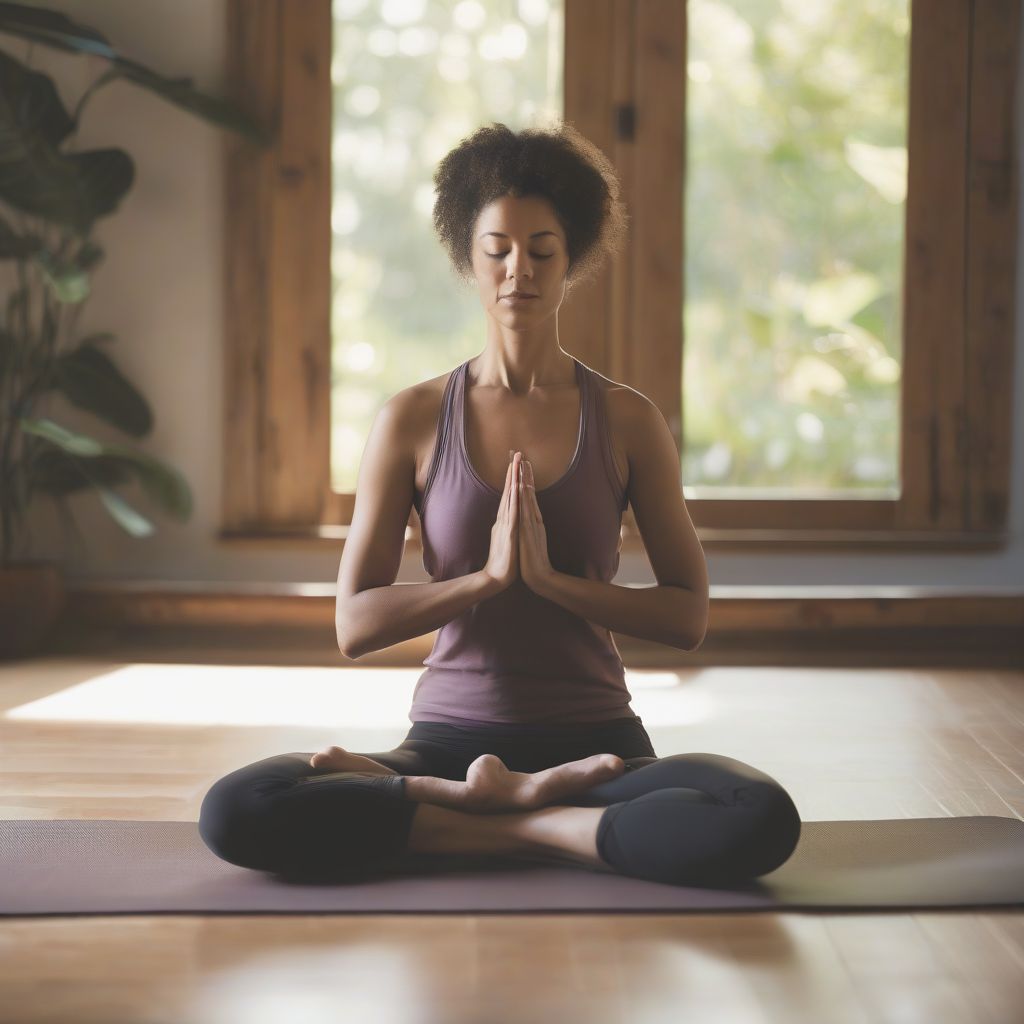Have you ever noticed how easily your mind races from one thought to the next? In our fast-paced world, finding moments of quiet reflection can feel impossible. This constant mental chatter can lead to stress, anxiety, and difficulty focusing. But what if there was a simple yet powerful tool to help calm the storm within? Enter meditation – a practice that has been scientifically proven to reduce stress, improve focus, and enhance emotional well-being.
This guide will walk you through how to create a daily meditation routine, even if you’re a beginner. We’ll explore various techniques, common obstacles, and tips for making meditation a sustainable part of your life.
Understanding the Benefits of Daily Meditation
Before we dive into the “how-to,” let’s take a moment to understand why establishing a daily meditation routine is worth the effort. Numerous studies have shown that regular meditation can lead to:
Reduced stress and anxiety: Meditation helps regulate the body’s stress response system, decreasing the production of cortisol (the stress hormone).
Improved focus and concentration: Research suggests that meditation strengthens the prefrontal cortex, the area of the brain responsible for attention and executive functions.
Enhanced emotional regulation: By observing thoughts and emotions without judgment, meditation can help cultivate greater self-awareness and emotional resilience.
Increased self-compassion: Meditation encourages a gentler, more accepting relationship with oneself, fostering feelings of kindness and understanding.
Creating Your Personalized Meditation Routine
Establishing a daily practice is like nurturing a plant. It requires consistency, patience, and a little bit of love. Here’s a step-by-step guide to help you get started:
1. Choose a Quiet Space
Find a quiet and comfortable space in your home where you can sit or lie down without distractions. This could be a corner of your bedroom, a cozy spot on the couch, or even a dedicated meditation cushion.
2. Set a Time
Experiment with different times of day to see what works best for you. Many people find it helpful to meditate first thing in the morning to set a positive tone for the day, while others prefer to meditate in the evening to unwind and de-stress.
3. Start Small
Don’t feel pressured to meditate for long periods. Begin with just 5-10 minutes and gradually increase the duration as you feel comfortable.
4. Find a Comfortable Posture
Whether you choose to sit cross-legged on a cushion, sit upright on a chair with your feet flat on the floor, or lie down on your back, ensure your spine is straight and your body is relaxed.
5. Select a Meditation Technique
There are countless meditation techniques available. Here are a few popular options to get you started:
-
Mindfulness Meditation: Focus your attention on your breath, noticing the sensations of each inhale and exhale. When your mind wanders (and it will!), gently guide your attention back to your breath.
-
Guided Meditation: Listen to guided meditations on apps like Calm, Headspace, or Insight Timer. These meditations often use imagery, visualizations, or prompts to guide your practice.
-
Loving-Kindness Meditation: This practice involves cultivating feelings of love, kindness, and compassion towards yourself and others.
6. Be Patient and Consistent
Meditation is a practice, not a performance. There will be days when your mind races more than usual or you feel restless. Be kind to yourself and remember that even a few minutes of meditation is beneficial.
Overcoming Common Obstacles
“I can’t stop my thoughts.”
It’s perfectly normal for your mind to wander during meditation. The goal isn’t to silence your thoughts completely but rather to observe them without judgment. When you notice your mind has strayed, gently acknowledge the thought and redirect your attention back to your breath or chosen anchor.
“I don’t have enough time.”
Even a few minutes of daily meditation can make a difference. Start small and gradually increase the duration as you feel comfortable. You can also incorporate mindfulness into everyday activities, such as brushing your teeth, washing dishes, or walking.
“I’m not sure if I’m doing it right.”
There’s no right or wrong way to meditate. The key is to find a technique that resonates with you and be patient with the process. If you find yourself struggling, consider attending a meditation class or working with a qualified meditation teacher.
Tips for Making Meditation a Habit
Set a reminder: Use your phone’s alarm or a meditation app to remind you to meditate at your chosen time.
Create a ritual: Light a candle, diffuse essential oils, or listen to calming music to create a peaceful atmosphere.
Track your progress: Use a journal or app to track your meditation sessions and note any benefits you experience.
Join a community: Connect with other meditators online or in person for support and accountability.
Conclusion
Incorporating a daily meditation routine into your life is a powerful way to cultivate inner peace, reduce stress, and enhance your overall well-being. Start small, be patient with yourself, and enjoy the journey.
What steps will you take today to create your own daily meditation routine? Share your thoughts and experiences in the comments below!
 Meditation Routine
Meditation Routine
[amazon bestseller=”meditation cushion”]
